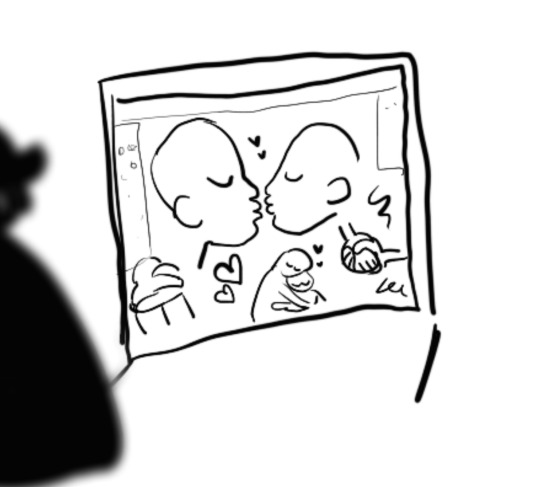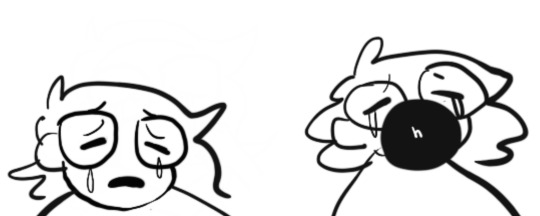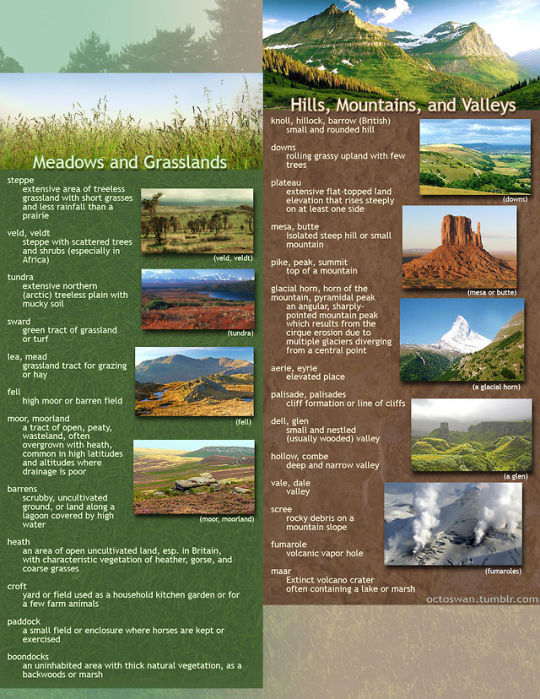Text
draw it bad and draw it weird and draw it catered only to yourself and draw it wobbly and draw it too small and draw it with the default brush and draw it without using references and draw it and leave it unfinished and draw it for the first time and draw it
40K notes
·
View notes
Text
So my sister wants to start sewing more, because
a. She’s 5′ 11″ and can never find pants long enough for her legs or shirts long enough for her arms.
b. She hates synthetic fibers as much as I do and it’s difficult to find natural fiber clothes that aren’t made of cotton
c. She’s a biologist and would physically fistfight microplastics if given half a chance
So her gift from mom and dad for her birthday was a sewing machine. Not a super expensive one but a good solid serviceable one.
And recently she asked “So where do I GET wool or linen and thread that isn’t polyester” and mom was like ‘go ask your sister’
And I, of course, crashed into the group text like “GET A PEN I HAVE WEBSITES FOR U” and honestly I’m thrilled about this
97K notes
·
View notes
Text
i love having the hubris to go 'sure i'll try that, how hard can it be' about every creative skill under the sun. jack of all trades master of shit fuck but who says you have to be a master??? maybe i want to sew a mediocre plushie and code a janky mod and write a bland song. im having fun. im in my lane. im learning and im thriving.
27K notes
·
View notes
Note
teach me?? how to draw?? the action of kissing????



Step 1. yearn
225K notes
·
View notes
Photo



So I probably shouldn’t be dispensing advice on this subject given that I draw fingers with anything from zero to five knuckles apiece depending on my mood and I frequently put knees in places they shouldn’t be, but here I go anyhow!
I don’t exactly have a calculated, methodical approach to drawing the figure. Most of the time, I try to nail down the movement and emotion in a pose before I even begin to think about the accuracy of the anatomy. If I worry too much about constructing a perfectly-proportioned figure – at least in the preliminary sketches – it tends to suck a lot of the dynamism out of my work. When I do thumbnail sketches I try to make my lines as long and free-flowing as possible, without getting too hung up on little technicalities like the fact a person’s legs are not typically five times the length of their torso (I usually fix these mistakes later on. Y'know. Most of the time). Just about the only things I’ll try to pin down in these quick sketches are the angles of the head, shoulders and pelvis, the midpoint of the torso, and sometimes the curve of the spine, just to make sure my poses aren’t too far outside the realm of anatomical possibility. Once I’ve gotten a pose to the stage where it expresses the mood or motion I’m going for (which usually takes several different iterations), then I’ll start to work out where all the various parts ought to be. Which isn’t to say I won’t make bones curve and joints bend in totally improbable ways if it suits my purpose.
So having just re-read the above, I feel like it’s really not particularly helpful. I guess I owe whatever skills I’ve acquired to trial and error rather than systematic study, so my working process is about three parts total chaos to one part vague instinct. But for anyone just starting out, I can’t overstate the importance of studying from life. This doesn’t necessarily mean you should take life drawing classes (although they’re great, and I wish I’d taken more) – just watch people as they walk or ride bikes or light cigarettes or lift heavy boxes and try to build up a basic mental model of how the human body works. Pay attention to people’s body language and various quirks and mannerisms and file them away for later. I think I owe most of my artistic ability, such as it is, to having constantly observed the people around me – far more so than the time I’ve spent actually sitting down and drawing. So, y'know, everyone thinks I’m a creep and I never get invited to parties, but on the plus side I’m able to make an extremely meagre living by drawing silly pictures. Everything’s a tradeoff.
9K notes
·
View notes
Text
we all talk about doing it scared doing it alone doing it weird etc. but the the hideously awful truth is that you also often have to do it stupid
76K notes
·
View notes
Text
Do you ever look at your own art and think, "Wow! I drew that? How?"
And the answer is usually, "You took three hours, after a lifetime of practice, that's how."
16 notes
·
View notes
Text
So earlier in art class today, someone drew a characters hands in their pockets and mentioned that hands are really like the ultimate end boss of art, and most of us wholeheartedly agreed. So then, our teacher went ahead and free handed like a handful of hands on the board, earning a woah from a couple of students. So the one from earlier mentioned how it barely took the teacher ten seconds to do what I can’t do in three hours. And you know what he responded?
“It didn’t take me ten seconds, it took me forty years.”
And you know, that stuck with me somehow. Because yeah. Drawing a hand didn’t take him fourth years. But learning and practicing to draw a hand in ten seconds did. And I think there’s something to learn there but it’s so warm and my brain is fried so I can’t formulate the actual morale of the lesson.
79K notes
·
View notes
Text
my dad likes to call the stretches of time where you’re not creating “dreaming periods” and says that they’re meant to allow you to absorb all of the beauty, life, and inspiration from the things around you so that when you’re able to create again, you will have fanned your spark back into a flame. sometimes its hard to see those moments as anything but stagnation, but he always says that they’re natural and healthy and needed—things that should be embraced rather than feared.
137K notes
·
View notes
Photo





I made these as a way to compile all the geographical vocabulary that I thought was useful and interesting for writers. Some descriptors share categories, and some are simplified, but for the most part everything is in its proper place. Not all the words are as useable as others, and some might take tricky wording to pull off, but I hope these prove useful to all you writers out there!
(save the images to zoom in on the pics)
215K notes
·
View notes
Text

didnt realize this was an ad at first so i just assumed that was somebody's advice. no1 art tip... hunt monsters...
51K notes
·
View notes
Text
Why "Universal" means "Equally bad."
So you go to the store to buy needles for your sewing machine. You are going to find one of two things: a few "Universal" needles, or a large section with dozens of needle types.
"None of these say my machine brand on them," you think. "What do these numbers mean?"
I'm here to help you out!
It turns out that needles for sewing machines have amazing specialties to help make the work easier.
Ball point/Jersey: these needles have a rounded 'ball' point so that they don't accidentally cut the threads in a knit fabric. Ever cut a thread in a sweater? We don't want that to happen in a knit fabric either. Knits are used for t-shirts, Sweatshirts and the like.
Sharp/Microtex Sharp: My Beloved. If you sew on any woven fabric, and see "puckers" along your seam, you're not using a Sharp needle. Developed for micro-textiles, these are brilliant for printed quilting cotton, satin, woven silk, and the like.
Jeans/Denim: larger eye, bladed tip. The Sharp is a stiletto; a Denim needle is a sword. The bladed tip makes it easier for your machine to power through densely woven fabrics like canvas, upholstery fabrics, brocade, and old-fashioned denim.
Stretch: this needle is designed to sew on Elastic fabrics with minimal skipped stitches. Spandex and Lycra can stretch so well that they're carried by the needle into the bobbin area of the machine, preventing the stitch from completing. Stretch needles pass through the fabric easier without punching holes.
Quilting: Yep! There's a needle for this! Great for piecing, these really shine while sewing through the layers of fabric and batting. They make free lotion quilting a lot easier, and you won't have to fiddle with the tensions as much!
Leather: perfect for Vinyl, pleather 'vegan' leather, actual leather, and suede, this needle is like a Denim needle with a twist; a twisted blade, that is. It makes a perfectly round hole to prevent the dreaded "Tear along the dotted line" effect.
Metallic: yes, all needles are made of metal, but this type is gentle to metallic threads for decorative work.
Topstitch: this needle has an extra large eye and groove to accommodate heavier threads. Great for high-contrast visible topstitching with heavier threads.
There are others, but this is a good place to start. "Universal" needles don't have any of the specialized features listed above. They aren't sharp, aren't ball-pointed either. They have an average sized eye and groove.
They will sew. They will form a stitch, and they can be a lifesaver when you're not sure what kind of needle to use because you're sewing with more than one challenging fabric simultaneously. However, they aren't "good at" anything. They're kind of "equally bad" at everything.
Do yourself and your sewing machine a favor: Use the right needle for the right project.
One final pro tip: change your needle every 8 hours or so of actual sewing, or at the beginning of every major project.
2K notes
·
View notes
Text
How fucking annoying is it when you feel so restless with creative energy but you can’t decide what to do with it and when you finally try to create something it comes out shit so you just give up and sit there being all creatively annoyed and jittery.
106K notes
·
View notes
Text
So! In looking for more resources on Black hair, I found this amazing, simplified explanation for afros, locs, braids, and twists!! Everyone thank "Daisy E" for their contribution to diversity and inclusion within the art space!
It's far past time to draw our Black characters with our hairstyles and natural hair textures. Please take the time to look, and practice!
6K notes
·
View notes
Text
You all need to hear this:
1. You probably dont suck at your craft as much as you think you do, I bet a lot of people are amazed at what you can make, and
2. If you actually are the Literal Worst In The Whole Wide World at your craft... who the fuck cares? What are they gonna do, call the police on you? Keep making your shitty little things, youre the boss of you, fuck the haters.
38K notes
·
View notes

